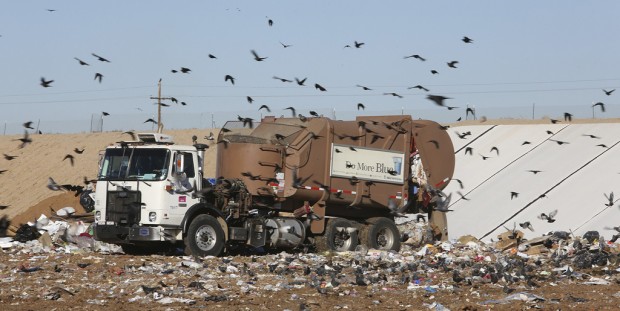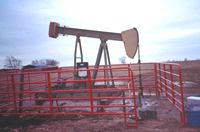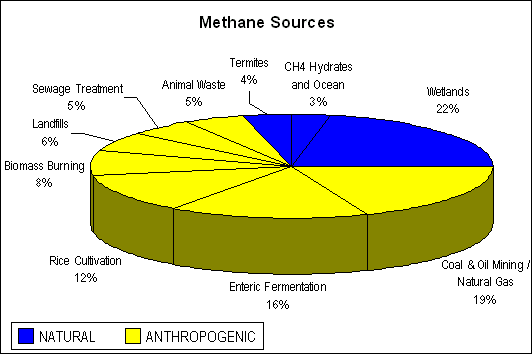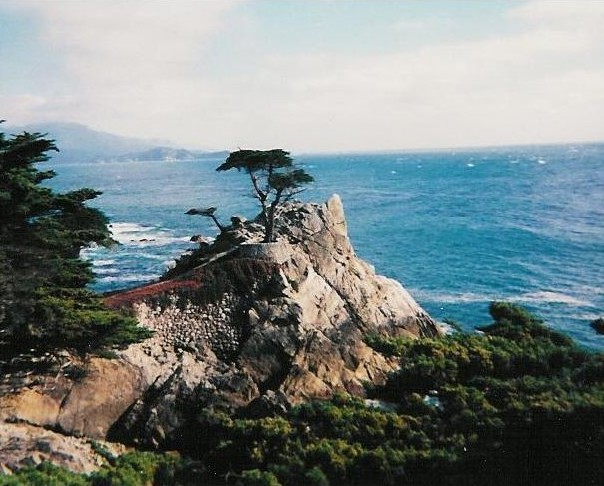Methane Soil Gas Testing and Risk Evaluation
Methane gas is present in the soil beneath much of Southern California. Areas more prone to high methane gas concentration include former and active oil fields,  swamps, landfills and where near-surface naturally occurring petroleum deposits are present. Methane can form an explosive mixture in air at levels as low as 5 percent, especially within enclosed structures. Pockets of the gas exist naturally underground and can accumulate beneath residential and commercial buildings and industrial parks. Risk associated with methane accumulation can be mitigated with a properly designed barrier and/or venting system. However, before spending money on a mitigation system, most developers and home owners are well served to perform a methane survey first.
swamps, landfills and where near-surface naturally occurring petroleum deposits are present. Methane can form an explosive mixture in air at levels as low as 5 percent, especially within enclosed structures. Pockets of the gas exist naturally underground and can accumulate beneath residential and commercial buildings and industrial parks. Risk associated with methane accumulation can be mitigated with a properly designed barrier and/or venting system. However, before spending money on a mitigation system, most developers and home owners are well served to perform a methane survey first.
The California State Oil and Gas Supervisor has designated the following as high-risk areas for methane accumulation in Southern California: Salt Lake oil field (City of Los Angeles - Fairfax-Wilshire District); Newport oil field (City of Newport  Beach); Santa Fe Springs oil field (City of Santa Fe Springs); the Rideout Heights area of the Whittier oil field (City of Whittier); Los Angeles City oil field (City of Los Angeles); Brea-Olinda oil field (City of Brea); Summerland oil field (City of Summerland); and Huntington Beach oil field (City of Huntington Beach). The City of Los Angeles established Ordinance No. 175790 which amended Section 91.106.4.1 and Division 71 of Article 1, Chapter IX of the Los Angeles Municipal Code to establish citywide methane mitigation requirements and include more current construction standards to control methane intrusion into buildings. This was promulgated, in part, due to a fire in building with the Fairfax Area of the City of Los Angeles in 1985 resulting from a high volume of methane gas seepage through cracks in the concrete floor of a building, and in 1999 when large pockets of methane gas in subsurface geological formations were discovered at the Playa Vista project area of West Los Angeles.
Beach); Santa Fe Springs oil field (City of Santa Fe Springs); the Rideout Heights area of the Whittier oil field (City of Whittier); Los Angeles City oil field (City of Los Angeles); Brea-Olinda oil field (City of Brea); Summerland oil field (City of Summerland); and Huntington Beach oil field (City of Huntington Beach). The City of Los Angeles established Ordinance No. 175790 which amended Section 91.106.4.1 and Division 71 of Article 1, Chapter IX of the Los Angeles Municipal Code to establish citywide methane mitigation requirements and include more current construction standards to control methane intrusion into buildings. This was promulgated, in part, due to a fire in building with the Fairfax Area of the City of Los Angeles in 1985 resulting from a high volume of methane gas seepage through cracks in the concrete floor of a building, and in 1999 when large pockets of methane gas in subsurface geological formations were discovered at the Playa Vista project area of West Los Angeles.
 In response to the city ordinance, the City of Los Angeles Department of Building and Safety (LADBS) developed a map of Methane and Methane Buffer Zones. These areas displayed on map are considered to have a high potential for methane gas to be present at elevated or hazardous concentrations in the subsurface. These areas generally surround former oil production fields, which are located throughout the city. The LADBS has established requirements for methane testing when properties within these zones are redeveloped or structural additions are proposed. The results of the methane survey must be presented to the LADBS before construction permits will be granted. If elevated levels of methane are discovered, the hazard must be mitigated by incorporating remedial measures into the design plans. Methane testing and mitigation standards have been established for other jurisdictions including unincorporated Los Angeles County (County of Los Angeles 2008 Building Code), Huntington Beach (City Specification No. 429 - Methane District Building Permit Requirements), Santa Fe Springs (City Ordinance 955, Section 117.131 of the City Code) , and Long Beach/Signal Hill.
In response to the city ordinance, the City of Los Angeles Department of Building and Safety (LADBS) developed a map of Methane and Methane Buffer Zones. These areas displayed on map are considered to have a high potential for methane gas to be present at elevated or hazardous concentrations in the subsurface. These areas generally surround former oil production fields, which are located throughout the city. The LADBS has established requirements for methane testing when properties within these zones are redeveloped or structural additions are proposed. The results of the methane survey must be presented to the LADBS before construction permits will be granted. If elevated levels of methane are discovered, the hazard must be mitigated by incorporating remedial measures into the design plans. Methane testing and mitigation standards have been established for other jurisdictions including unincorporated Los Angeles County (County of Los Angeles 2008 Building Code), Huntington Beach (City Specification No. 429 - Methane District Building Permit Requirements), Santa Fe Springs (City Ordinance 955, Section 117.131 of the City Code) , and Long Beach/Signal Hill.
EMS is a LADBS approved and certified methane testing agency utilizing methane.jpg) testing procedures based on the Site Testing Standards for Methane (LADBS Approval No. TA10218). This document establishes methane sampling frequency and depth based on the square footage of the site, the total depth below current grade of all proposed improvements, and the anticipated depth to groundwater at the site. The results of the testing performed by EMS will provide appropriate data necessary to determine the level of methane mitigation, if required, for issuance of building permits according to Level I, Level II, Level III, Level IV or Level V Mitigation Requirements described in Table 1A and Table 1B of the LADBS Standards.
testing procedures based on the Site Testing Standards for Methane (LADBS Approval No. TA10218). This document establishes methane sampling frequency and depth based on the square footage of the site, the total depth below current grade of all proposed improvements, and the anticipated depth to groundwater at the site. The results of the testing performed by EMS will provide appropriate data necessary to determine the level of methane mitigation, if required, for issuance of building permits according to Level I, Level II, Level III, Level IV or Level V Mitigation Requirements described in Table 1A and Table 1B of the LADBS Standards.
Links:
LADBS Methane Buffer Zone Map
LADBS Site Testing Standards for Methane
City of Santa Fe Springs Methane Map
